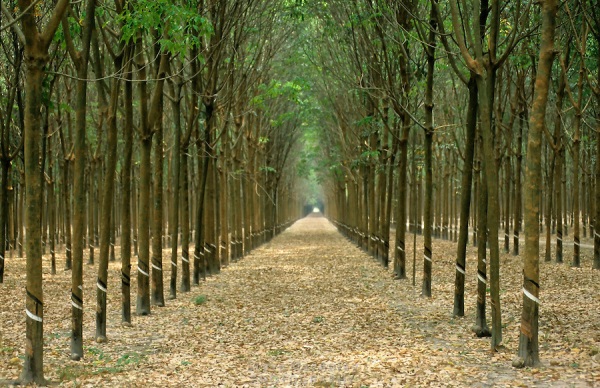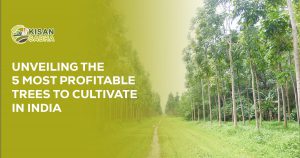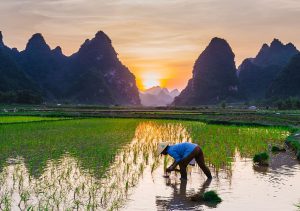Synopsis
The Assam government in August allowed up to 5% of the total land of tea gardens to be used for promotion of eco-friendly tea tourism, cultivation of agriculture crops, green power and animal husbandry.
With the Assam government allowing diversion of tea land for non-tea purposes, the Rubber Board is looking to promote rubber plantation on those lands.
The board has identified Assam as the next frontier for rubber as it looks for ways to reduce rubber import bill.
“We can explore planting of rubber in the periphery of tea estates. We had a discussion with the revenue department of the state government and officials informed that the state government is working on necessary changes of allowing tea areas for no tea purpose,” K N Raghavan, executive director of Rubber Board, told media persons in Guwahati on Thursday. “Assam has over 850 tea estates,” he added.

More than 16.5 million rubber plants have already been planted in the Northeast under a project launched by Automotive Tyre Manufacturers’ Association (ATMA) in collaboration with the Rubber Board for developing 200,000 hectares of rubber plantation in this region and West Bengal over five years at an outlay of Rs 1,100 crore, Raghavan said. The plan includes planting 5.5 million trees transported from Kerala to the Northeast by rakes over the last one year.
The Assam government in August allowed up to 5% of the total land of tea gardens to be used for promotion of eco-friendly tea tourism, cultivation of agriculture crops, green power and animal husbandry.
The government amended Assam Fixation of Ceiling on Landholding Act, 1956, through an ordinance to pave way for this.
“Provided that in cases where tea plantation is not possible in land allowed to be retained by the tea gardens and lying as fallow and unutilised, such land and hereditaments or any part thereof may be used for the following purposes – promotion of eco-friendly tea tourism; cultivation of agricultural crops which include cash crops, horticultural crops, floriculture, medicinal plants, agar wood, sandal wood and bamboo; animal husbandry and fisheries; green power and non-conventional energy resources; social infrastructure and services which include wellness centres, schools, colleges, universities, medical, nursing, paramedical institutions, cultural and recreational exhibition centres and government offices that could be set up by Tea Garden Authority or a government entity; (and) food processing, blending and packaging units,” the ordinance said.
About its collaboration with ATMA, Rubber Board said it is perhaps the first of its kind project in the world where the consuming industry is working in collaboration with government agencies involved in production of natural rubber (NR) to increase availability of this strategic raw material.
“Raw material security has been reckoned as a major area of importance for any country in the new world order,” Raghavan said. “Given the importance of such strategic raw material, the country needs to focus on increasing the domestic NR production so as to become self-reliant and avoid dependence on import of this critical raw material to the maximum extent possible.”
The demand-supply gap for natural rubber has been widening in India and at present nearly 40% of its requirement is met through imports.
In 2021-22, domestic production of rubber stood at 770,000 tonnes against consumption of 1.23 million tonnes. It is estimated that by 2030, the country would require about two million tonnes of NR per annum.
Satish Sharma, chairman of ATMA, said, “In one of the biggest such projects anywhere in the world, planting material in such large quantities has been transported (from Kerala to the Northeast) overcoming all logistical challenges. ATMA NR Project is truly a collaborative exercise with rubber consuming industry, the Rubber Board of India, and all the stakeholders working in unison to realise the vision of an Atmanirbhar Bharat in rubber production.”
The project activities are being undertaken in Arunachal Pradesh, Assam, Manipur, Meghalaya, Mizoram, Nagaland, Tripura, and West Bengal.
The NE region holds immense potential for rubber plantation in view of availability of land and suitable agroclimatic conditions. At present, NE states account for 18% of its production. Once the objective of developing plantations in additional 200,000 hectares under the ATMA NR Project is achieved, it is estimated that the share of NE states will increase to 32 % of production.
Rubber Board stated that under the project, the capacity of nurseries in Northeastern states is being developed to meet the requirements of planting material in the coming years. The project entails socioeconomic development of resource-poor populations in these states since farmers with landholding of less than one acre are engaged in the project. Plantation in 200,000 hectares will therefore directly benefit nearly 250,000 farmers and their families.
Read more at-https://bit.ly/3zP1BAD



